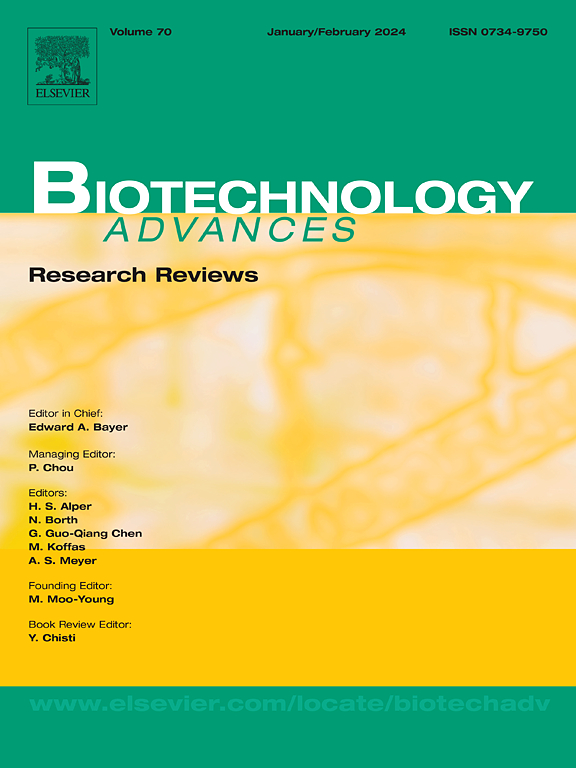基因工程大肠杆菌:PET塑料废物的新回收者。
IF 12.5
1区 工程技术
Q1 BIOTECHNOLOGY & APPLIED MICROBIOLOGY
引用次数: 0
摘要
聚对苯二甲酸乙二醇酯(PET)污染是一个重要的环境问题,由于聚合物的广泛应用,明显的结晶性和内在的耐生物降解性。尽管某些野生型微生物表现出pet水解能力,但它们的工业适用性受到增殖缓慢、催化性能欠佳和在环境压力下有限的恢复能力的限制。这些挑战突出了工程微生物平台介导强大的原位PET解聚的必要性。这篇综述讨论了基因工程大肠杆菌(E. coli)作为PET生物转化的一个有前途和通用的基础的出现。petase和相关水解酶在大肠杆菌中异种表达,并进行迭代蛋白工程,以提高热稳定性,催化转化率和底物选择性。同时,合成生物学策略使多酶级联的模块化组装和表面显示系统能够增强微生物- pet界面相互作用和催化效率。此外,大肠杆菌内天然和合成代谢回路的整合使乙二醇(EG)和对苯二甲酸(TPA)转化为中心代谢物,随后被导向多种高价值生物产品的生物合成。本文章由计算机程序翻译,如有差异,请以英文原文为准。
Genetically engineered Escherichia coli: The new recyclers of PET plastic waste
Polyethylene terephthalate (PET) pollution is a significant environmental concern due to the polymer's widespread application, pronounced crystallinity, and intrinsic resistance to biodegradation. Although certain wild-type microorganisms demonstrate PET-hydrolyzing capabilities, their industrial applicability is constrained by slow proliferation, suboptimal catalytic performance, and limited resilience under environmental stress. These challenges highlight the imperative for engineered microbial platforms mediating robust, in situ PET depolymerization. This review discusses the emergence of genetically engineered Escherichia coli (E. coli) as a promising and versatile chassis for PET bioconversion. PETases and related hydrolases have been heterologously expressed and subjected to iterative protein engineering in E. coli to improve thermal stability, catalytic turnover rates, and substrate selectivity. In parallel, synthetic biology strategies have enabled the modular assembly of multi-enzyme cascades and surface display systems to enhance microbe–PET interfacial interactions and catalytic efficiency. Furthermore, integration of native and synthetic metabolic circuits within E. coli enables the biotransformation of ethylene glycol (EG) and terephthalic acid (TPA) into central metabolites, which are subsequently directed toward the biosynthesis of a diverse array of high-value bioproducts.
求助全文
通过发布文献求助,成功后即可免费获取论文全文。
去求助
来源期刊

Biotechnology advances
工程技术-生物工程与应用微生物
CiteScore
25.50
自引率
2.50%
发文量
167
审稿时长
37 days
期刊介绍:
Biotechnology Advances is a comprehensive review journal that covers all aspects of the multidisciplinary field of biotechnology. The journal focuses on biotechnology principles and their applications in various industries, agriculture, medicine, environmental concerns, and regulatory issues. It publishes authoritative articles that highlight current developments and future trends in the field of biotechnology. The journal invites submissions of manuscripts that are relevant and appropriate. It targets a wide audience, including scientists, engineers, students, instructors, researchers, practitioners, managers, governments, and other stakeholders in the field. Additionally, special issues are published based on selected presentations from recent relevant conferences in collaboration with the organizations hosting those conferences.
 求助内容:
求助内容: 应助结果提醒方式:
应助结果提醒方式:


